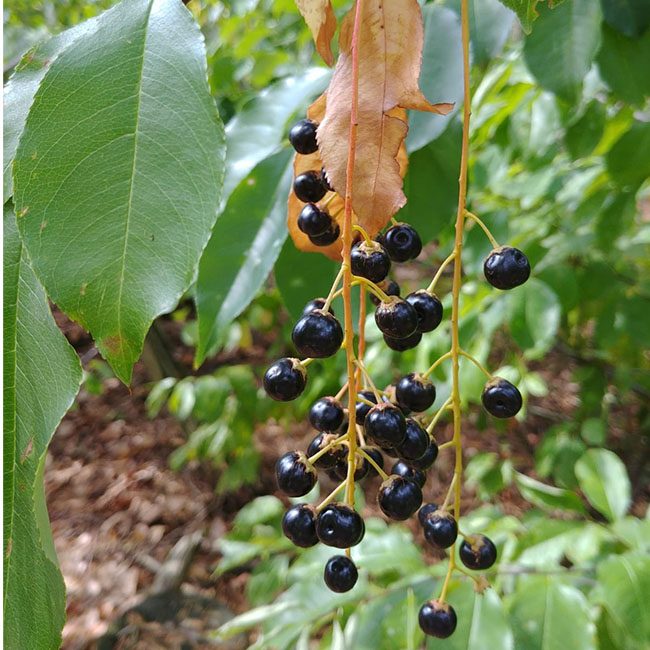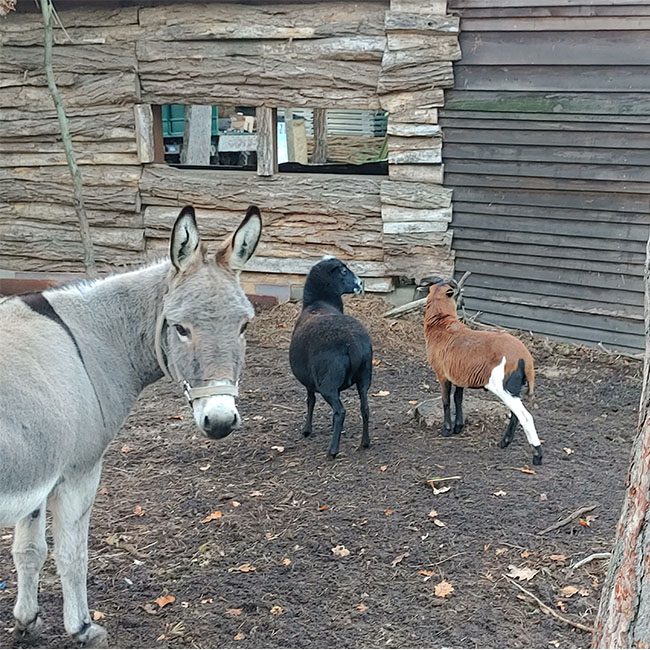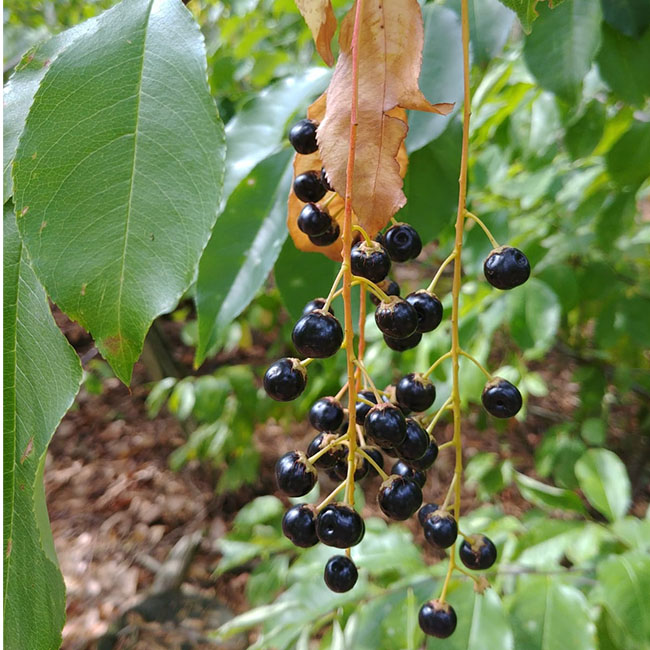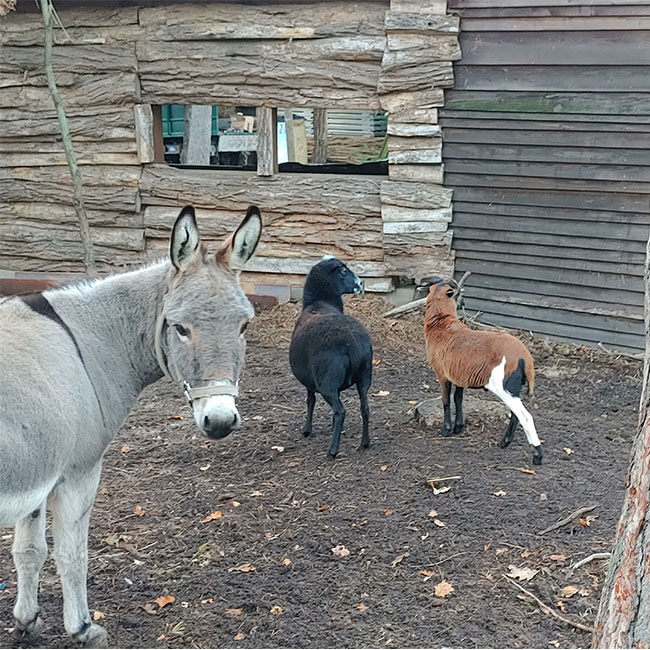Forest Management
In the 17th century, a tree called the black cherry (Prunus serotina) was introduced from North America to Europe because of its rapid growth for reforestation. What wasn't known then is that the black cherry is an invasive species that replaced native plants and didn't produce thick trunks as was hoped but a dense shrub layer instead. Its bitter twigs and leaves are not eaten by dear but fortunately our donkeys, sheep and goats feed on them. After our animals have successfully controlled the black cherry, we plant native plants such as oak, rowan and hazelnut.
In the 17th century, a tree called the black cherry (Prunus serotina) was introduced from North America to Europe because of its rapid growth for reforestation. What wasn't known then is that the black cherry is an invasive species that replaced native plants and didn't produce thick trunks as was hoped but a dense shrub layer instead. Its bitter twigs and leaves are not eaten by dear but fortunately our donkeys, sheep and goats feed on them. After our animals have successfully controlled the black cherry, we plant native plants such as oak, rowan and hazelnut.


Forest Management
In the 17th century, a tree called the black cherry (Prunus serotina) was introduced from North America to Europe because of its rapid growth for reforestation.
show more
What wasn't known then is that the black cherry is an invasive species that replaced native plants and didn't produce thick trunks as was hoped but a dense shrub layer instead. Its bitter twigs and leaves are not eaten by dear but fortunately our donkeys, sheep and goats feed on them. After our animals have successfully controlled the black cherry, we plant native plants such as oak, rowan and hazelnut.



